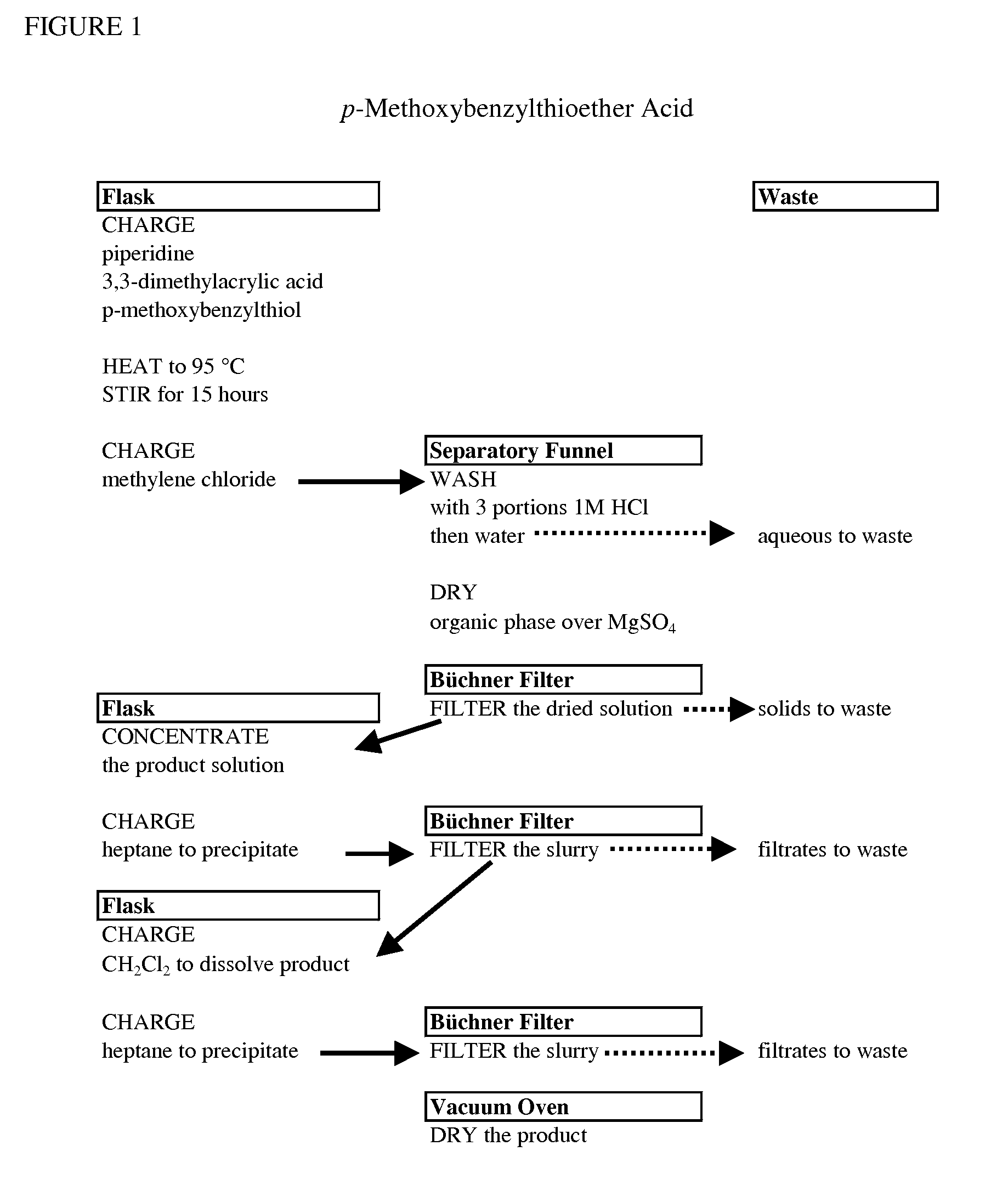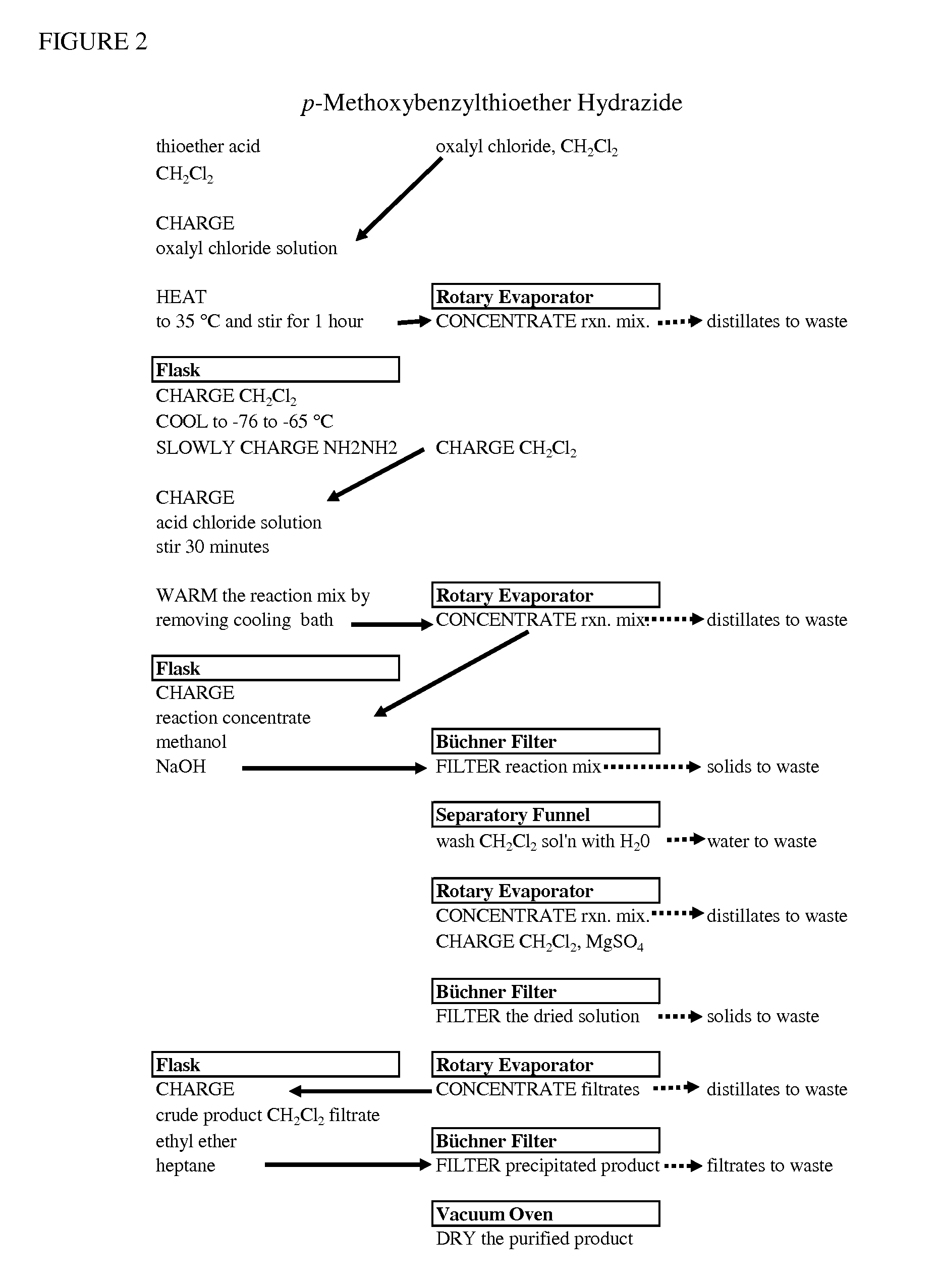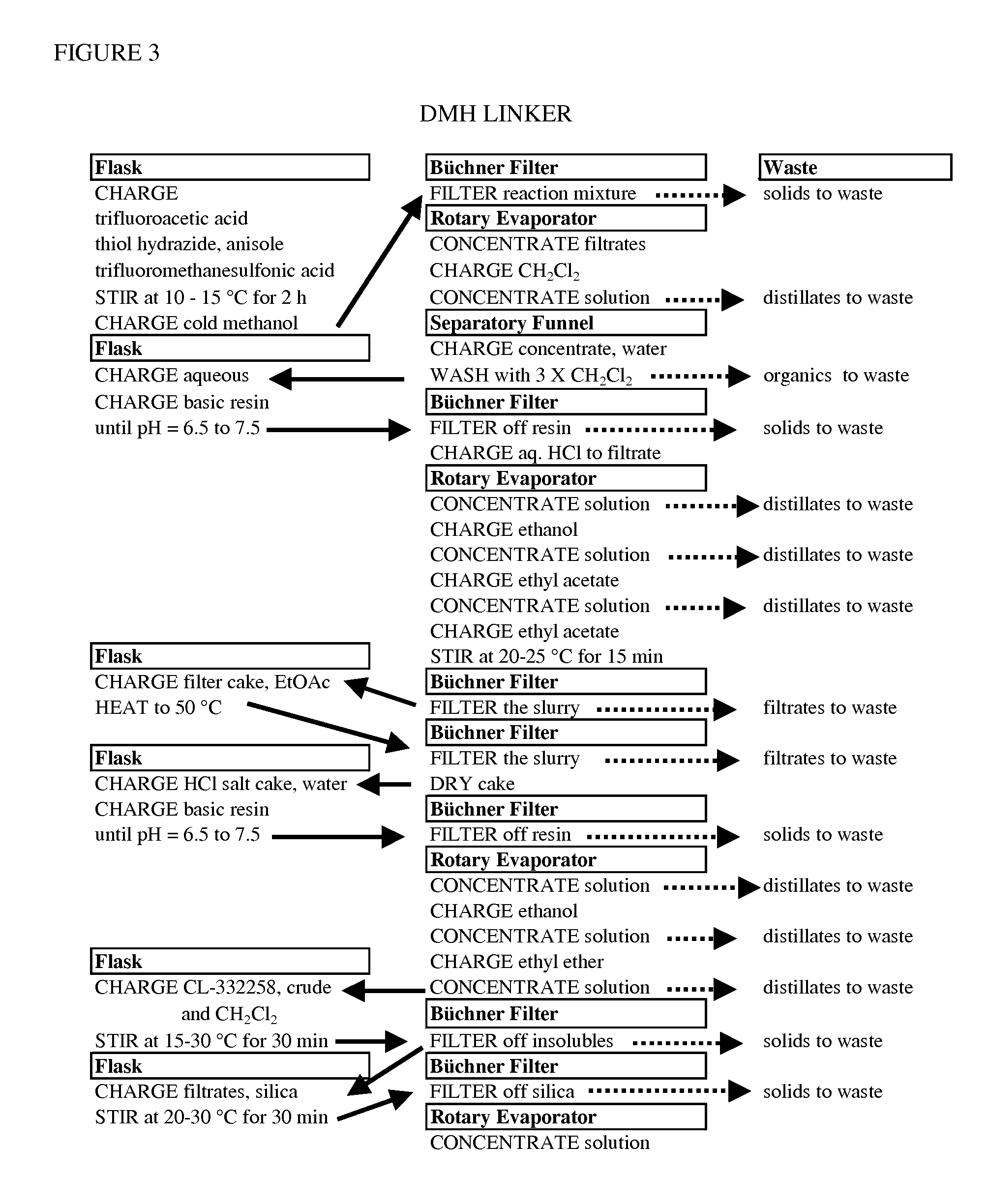Processes for making hydrazides
a technology of hydrazine and synthetic method, which is applied in the preparation of hydrazine, immunoglobulins, peptides, etc., can solve the problems of reducing yield and quality, affecting the efficiency of the overall process, and affecting the formation of crystallized hydrazine. , to achieve the effect of reducing or eliminating the need for scraping the flask, improving the overall process efficiency, and reducing the need for scraping
- Summary
- Abstract
- Description
- Claims
- Application Information
AI Technical Summary
Benefits of technology
Problems solved by technology
Method used
Image
Examples
example 1
Original Preparation of p-Methoxybenzylthioether Acid (1)
[0058]With reference to Equation I, a 5-L round bottomed flask, equipped with a thermocouple, mechanical stirrer, reflux condenser topped with N2 inlet, and 250 mL pressure equalizing addition funnel, was charged with 400 g, 465 mL, 4.70 mol of piperidine. 3,3-dimethylacrylic acid (215 g, 2.15 mol) was added portion wise into a stirred 5-L reaction flask. The reaction was vigorously stirred under N2. The reaction temperature was maintained to less than 35 to 40° C. during the addition (Note: strong exotherm, i.e., off gassing). p-Methoxybenzylthiol (386 g, 323 mL, 2.32 mol) was charged via pressure equalizing addition funnel over 15 minutes into the (5-L) reaction flask. The mixture was heated to 82 to 88° C., with stirring under N2. The reaction temperature was maintained in this range for 15 minutes. Note: exothermic. The clear yellow mixture was heated to 92 to 95° C. with stirring under N2 for a minimum of 15 hours. A 1 mL...
example 2
Original Preparation of p-Methoxybenzylthioether Acid Chloride (2)
[0062]With reference to Equation II, p-Methoxybenzylthioether acid (400 g, 1.57 mol) was charged into a 5-L round bottomed flask equipped with a thermocouple, a mechanical stirrer, a reflux condenser topped with N2 inlet, and a 0.5-L pressure equalizing addition funnel. Methylene chloride (1,600 g, 1,212 mL) was charged into the 5-L reaction flask. The clear solution was heated to 20 to 25° C. Methylene chloride (300 g) and oxalyl chloride (110 g, 78 mL) were charged into the 0.5-L pressure equalizing addition funnel. 350 mL of oxalyl chloride / methylene chloride solution were added via the addition funnel while maintaining the reaction temperature at 20 to 30° C. The clear yellow solution was stirred at 20 to 25° C. for a minimum of 30 minutes until bubbling subsided. Addition of oxalyl chloride was repeated. 350 ml of oxalyl chloride / methylene chloride solution were added via the pressure equalizing addition funnel t...
example 3
Original Preparation of p-Methoxybenzylthioether Hydrazide (3)
[0063]With reference to Equation III, a 5-L Morton type round bottomed flask was equipped with a thermocouple, a mechanical stirrer, a reflux condenser topped with N2 inlet, and a 0.5-L pressure equalizing addition funnel. p-methoxylbenzylthioether acid chloride was dissolved in 500 ml, 660 g of methylene chloride. The solution was transferred into a 2-L Erlenmeyer flask. 500 ml methylene chloride were added to make up a total volume of 1,300 mL solution.
[0064]In a 5-L Morton-type round-bottomed flask (RBF), Morton Type, were charged 2,400 g, 1,818 mL of methylene chloride and 256 g, 245 mL, @ 98% strength, 7.8 mol of anhydrous hydrazine. The mechanical stirrer speed was set at 255-270 rpm. The cloudy slurry was cooled to −69 to −72° C. using dry ice / acetone.
[0065]The acid chloride solution was added drop wise to the 5-L reaction flask via the 0.5-L pressure equalizing addition funnel, maintaining a reaction temperature o...
PUM
| Property | Measurement | Unit |
|---|---|---|
| temperature | aaaaa | aaaaa |
| temperature | aaaaa | aaaaa |
| temperature | aaaaa | aaaaa |
Abstract
Description
Claims
Application Information
 Login to View More
Login to View More - R&D
- Intellectual Property
- Life Sciences
- Materials
- Tech Scout
- Unparalleled Data Quality
- Higher Quality Content
- 60% Fewer Hallucinations
Browse by: Latest US Patents, China's latest patents, Technical Efficacy Thesaurus, Application Domain, Technology Topic, Popular Technical Reports.
© 2025 PatSnap. All rights reserved.Legal|Privacy policy|Modern Slavery Act Transparency Statement|Sitemap|About US| Contact US: help@patsnap.com



